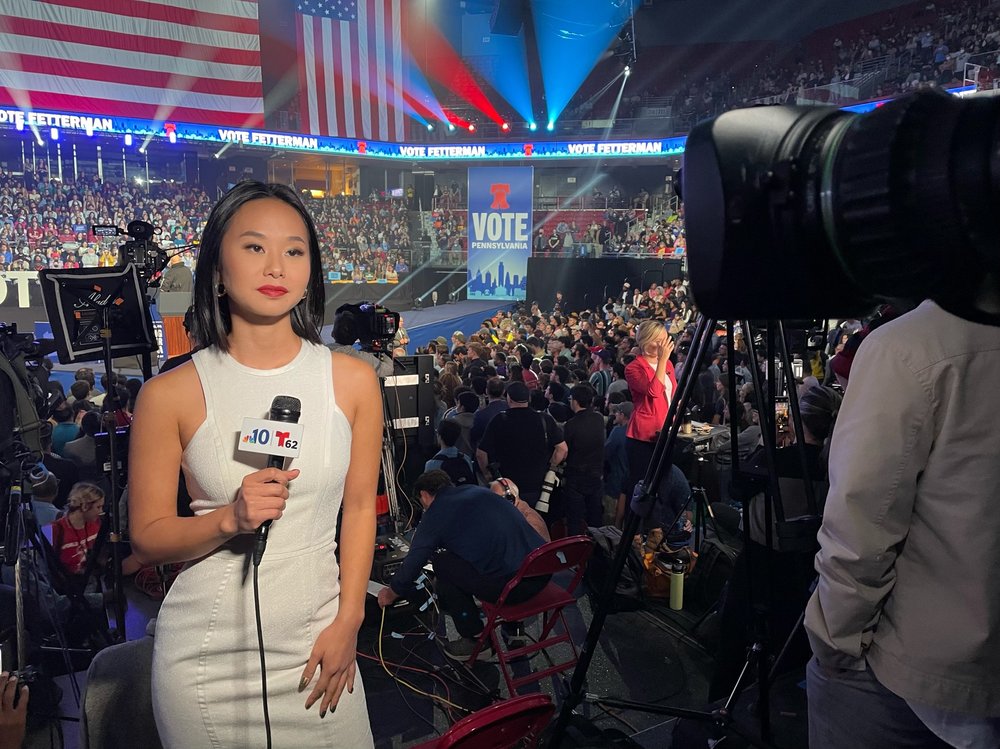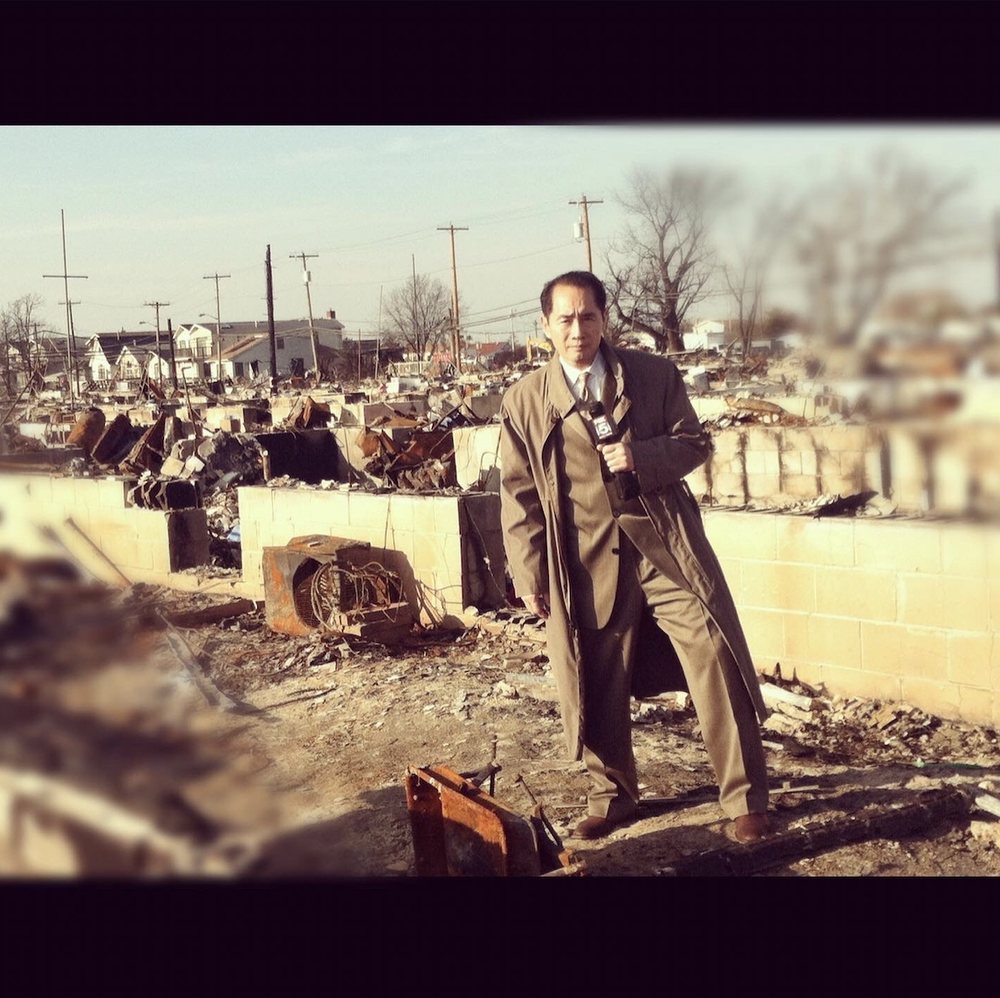
Investigative journalist Ti-Hua Chang says when he became a TV reporter in 1989, coverage of Asian American issues was relegated to “Chinese food and gangs.”
He was one of the country’s only Asian American broadcast reporters at the time and initially steered away from covering the diaspora lest he be “pigeonholed as the Asian reporter.” But Chang soon realized that his on-screen presence was making an impact on Asian American viewers, unrelated to the news he was delivering.
“In Philly, Denver, Detroit — almost every market I’ve been in — immigrant parents would come up to me and thank me,” he said. “They told me their children were ashamed of their Chinese names until they saw my name on TV.”
In the past three decades, Asian Americans have made tremendous strides in the media industry, from Connie Chung becoming the first woman to co-anchor the “CBS Evening News” to NBC and Huffington Post launching Asian American verticals focusing specifically on cultural issues. And yet Asian Americans are still heavily underrepresented in on-camera roles, according to a new report from the Asian American Journalists Association.
The organization surveyed 94 newsrooms in the nation’s top 20 television markets and found that one-quarter had no person of Asian descent on air, whether as reporters, anchors, meteorologists or hosts.
Only four had on-air staff that’s representative of their community’s AAPI populations — Phoenix, Denver, Miami and Cleveland. Compared to share of the population, Asian American on-air personnel were most underrepresented in Philadelphia, Detroit and Orlando.
Waliya Lari, AAJA’s director of programs and partnerships who authored the AAJA Broadcast Snapshot Project, said the findings are disappointing but not surprising.
“This report takes what we know anecdotally and puts it into numbers,” she said. “If a community isn’t properly represented on air, their stories aren’t being told, their issues aren’t being covered with proper context or framing.”
Being the ‘wrong minority’
Underrepresentation is not because there aren’t enough Asian American journalists to fill on-air roles, Lari said. It’s that some are being told they aren’t the “right” fit to fill a station’s diversity holes.
Of the reporters the AAJA study surveyed, some discussed encountering an “unspoken misperception” during the hiring process that the market is already saturated with Asian Americans. Megan Murphy, a former weekend anchor at a Kansas City station, filed a lawsuit alleging her news director denied her a promotion in January 2020, telling her she was “the wrong minority” for the position. (Attorneys for the station’s parent company, Nexstar, denied any discrimination occurred.)

Chang said that during a long stretch of unemployment in the 1990s, a news director at a major network told him that job offers eluded him not because he was a poor reporter but because he was “an Asian male.”
“He told me that when he watches an audition tape and sees an Asian male face, his neck gets tense and his stomach feels queasy, because he thinks of a karate expert or a Chinese laundryman,” Chang recalled. “When he watches the tape of an Asian woman, he says he feels good, because he thinks of geishas and Suzy Wong.”
David Louie, a pioneering tech reporter who recently retired after a half century at San Francisco’s ABC7, said concerns about “tokenism” in a quota system have been around since the 1970s.
“There was always that sense that if they hired a second Asian American reporter, that might be the end of diversity efforts,” he said.
Karen Hua, a general assignment reporter at NBC Philadelphia, said she also got the impression that stations can fill only one diversity quota at a time.
“I always thought they couldn’t possibly hire two Asian people; it would have to be a Black person and an Asian person,” she said. “That looks like diversity in my head. If you filled your Asian quota, then, well, there’s no more space for me.”
Numbers don’t tell the whole story
While the survey is enlightening, pegging newsroom hires to population figures isn’t a perfect metric for representation, Louie warned.
The AAJA study exposed a glaring representation gap in San Francisco, where Asian Americans comprise 28% of the population but only 19% of on-air staff. However, the city has some of the country’s most prominent Asian American journalists and anchors, like ABC7’s Dion Lim and NBC Bay Area’s Gia Vang, who are shaping coverage of Asian American issues — like the pandemic’s impact on Asian businesses and the surge in anti-Asian violence. The impact these Asian American journalists have is more important than quantity, Louie said.
“Bridging that gap between hiring numbers and community numbers is a matter of how empowered are the people in the newsroom to influence how stories are covered and advance the daily news agenda,” he said.
The AAJA survey, conducted from July to September 2021, contains some outdated figures. For example, Robert Handa, a reporter at NBC Bay Area and host of the show “Asian Pacific America,” said the station now has 10 full-time Asian Americans on-air staff — a figure that’s comparable to the city’s share of Asian population.
“The visible presence that on-air people have can inspire a lot of other young AAPI people to get into the business,” Handa said. “It shows them that this is an industry that is somewhat welcoming to them, or at least doesn’t have as many obstacles as they might have thought.”
In Philadelphia newsrooms, the AAJA report found only three Asian American anchors (all from 6ABC Action News) out of 149 broadcast talents — translating to 2% representation while Asian Americans comprise 6% of the population. In January, though, NBC10 Philadelphia hired two Asian Americans for on-camera roles, Hua and anchor Frances Wang, thereby doubling the racial group’s on-air representation six months prior.
To Hua, who has also worked at stations in California and New York, the hiring of two Asian American women at once felt like a revolutionary moment for the industry. Occupying reporter-anchor roles meant that Hua and Wang often appeared side by side on TV to tell stories.
“Having two Asian faces in two boxes on your TV screen — if I’d seen that as a kid, it would have blown my mind,” Hua said.
At the same time, efforts to diversify the newsroom also cannot stop at bringing more Asian faces on screen, she said. Hiring reporters from underrepresented Asian ethnic groups, such as the Hmong and Cambodians, is crucial. Just as important is ensuring there are Asian voices behind the scenes to steer sensitive and nuanced coverage of issues like anti-Asian violence.
“I take pride in telling AAPI stories but don’t want the burden to be on two people in the newsroom.” Hua said. “Having an AAPI producer or news director who can add anchor context would be helpful.”


